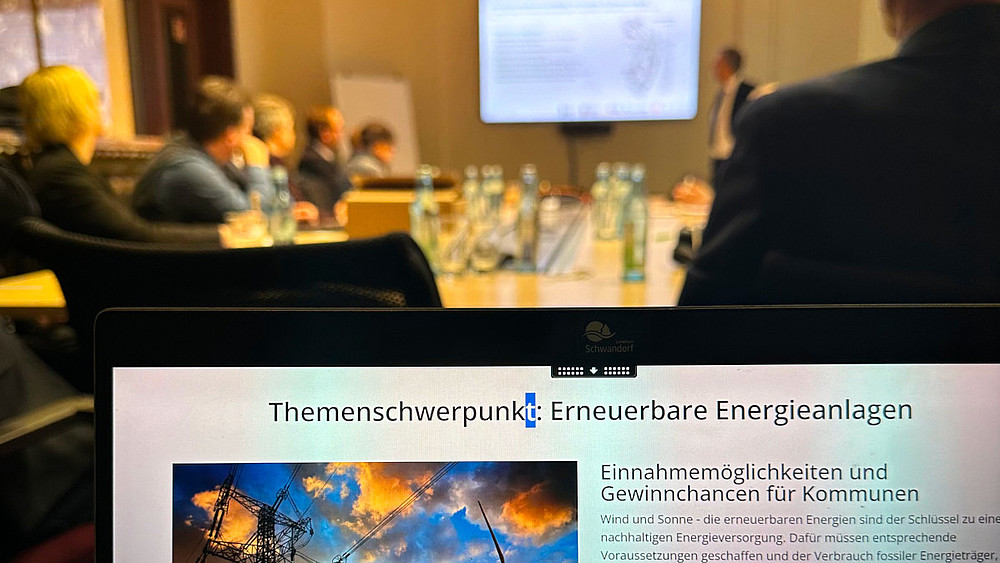The HSZG was also actively involved in the development of the groundbreaking recommendations for energy and grid expansion in the district of Görlitz.

On January 23, 2024, District Administrator Dr. Stephan Meyer and Sven Mimus, Managing Director of Entwicklungsgesellschaft Niederschlesische Oberlausitz mbH (ENO), in the presence of Prof. Mario Ragwitz, Director of the Fraunhofer Research Institution for Energy Infrastructures and Geothermal Energy IEG, Dr. Ella Middelhoff, Senior Consultant at Becker Büttner Held (BBH Consulting AG), and Thomas Gubsch, researcher at the Zittau/Görlitz University of Applied Sciences. Ella Middelhoff, Senior Consultant at Becker Büttner Held (BBH) Consulting AG, and Thomas Gubsch, research associate at the Zittau/Görlitz University of Applied Sciences, the overall strategy concept for energy and grid expansion in the district of Görlitz was officially presented at the district administration office of the district of Görlitz.
The presentation was also attended by representatives of SachsenNetze GmbH, the regional planning association Oberlausitz-Niederschlesien, Stadtwerke Zittau and Görlitz as well as LEAG.
The topics of sustainable energy generation, security of supply, price stability and the decision between centralized or decentralized systems are key areas that are inextricably linked to the energy transition and will continue to play a major role in the future. The pressure for change on the energy system is immense and is fundamentally challenging the traditional basic structures. New players are entering the market and raising the question of the technical, economic and social integration of renewable energies into the electricity system.

Why is this study so important? The district is an energy region and should remain so in the future. The main aim of the concept development is to draw up forward-looking recommendations for developments in electricity grid expansion, the integration of renewable energies, heat supply and alternative solutions such as hydrogen use and production. These recommendations will enable us to align ourselves as a district for the future and identify ways in which we can support the regional economy.
Despite the good path already taken in the area of renewable energies, which includes the expansion of wind power and PV systems as well as the repowering of old systems in almost all municipalities in the district, the district still faces challenges. Planning and implementation are dependent on the existing grid conditions, which means that it is often necessary to travel long distances to the nearest feed-in point or feed-in is not possible at all due to overloading. However, the use of renewable energy sources is vital in order to keep the district competitive in the long term.
At the same time, the district aims to create added value for the municipalities. According to Section 6 of the Renewable Energy Sources Act (EEG), towns and municipalities in the district can generate up to 6 million euros in annual revenue from the known renewable energy projects alone. In addition, there are funding opportunities and compensation payments. Last but not least, citizens benefit from a secure supply of electricity, heat and energy.
District Administrator Dr. Stephan Meyer: "I hope that the overall energy concept lays an important foundation and can bring about positive changes for our district. A forward-looking energy policy and sustainable value creation mean quality of life for current and future generations. That is our common goal. Our thanks go to the representatives of Fraunhofer IEG, BBH Consulting and the Zittau/Görlitz University of Applied Sciences for producing the study. The energy transition is a joint task that we can only tackle together and for which we need strong partners."
Text and image: District of Görlitz with kind permission
The overall strategy for energy and grid expansion in the district of Görlitz is published at https://www.sichtwechsel-zukunft.de/projekte.